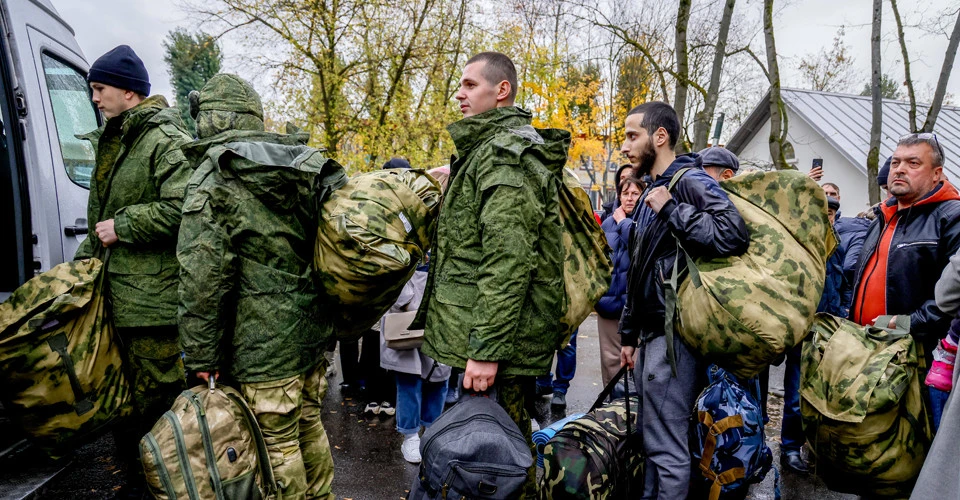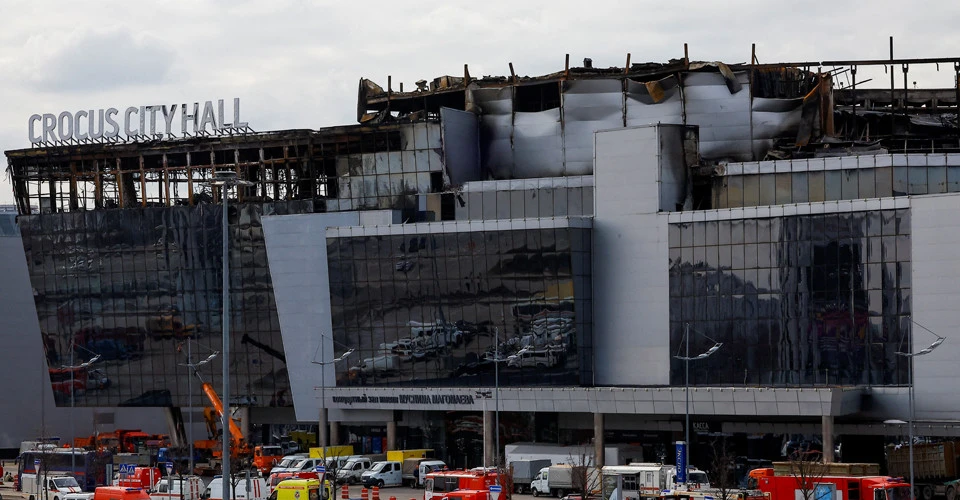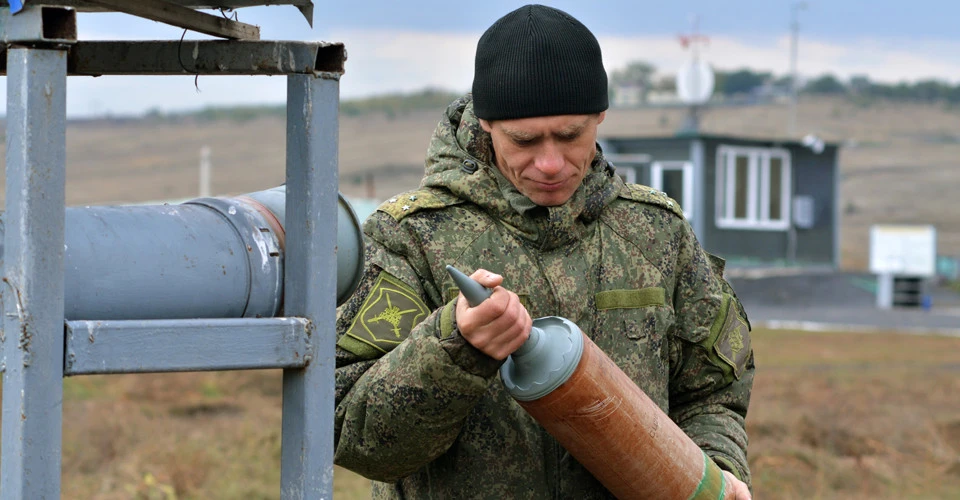
Fresh cannon fodder: Everything you need to know about new mobilization in Russia
Russia is ready to mobilize 300,000 additional troops on June 1. Ukrainian President Volodymyr Zelenskyy announced this at a joint conference with his Finnish counterpart on April 3. This information is partially confirmed by Russian official sources
What the text is about:
- How many people will be mobilized in Russia?
- Who will be drafted into the Russian army?
- What does the terrorist attack in Crocus City Hall have to do with it?
- What is the Dnieper River Flotilla?
- Will Russia be able to equip recruits?
How many people will be mobilized in Russia?
Putin took the first step toward another mobilization wave four months ago. On December 1, 2023, the Russian president signed a decree to increase the size of the Russian Armed Forces. According to the document, the staff of the Russian Armed Forces is set at 2.2 million, including 1.32 million military personnel. This is 170,000 more than was determined by the previous decree (dated 22.08.2022).
These figures are quite comparable to the March statements of the head of the Russian Defense Ministry. On March 20, Sergei Shoigu announced the creation of new armed formations in 2024.

Photo: gettyimages
"An army corps, a motorized rifle division, the Dnipro River Flotilla and a riverboat brigade of the flotilla will be formed. By the end of the year, we plan to form two combined arms armies and 30 formations, including 14 divisions and 16 brigades. We will continue to improve the combat and numerical composition of the Russian army, corresponding to the threats that have arisen to the country's security," said war criminal Shoigu.
If we take into account the minimum number of military units (40,000 people for an army, 4,000 for a division, and 2,000 for a brigade), the new units announced by Shoigu (2 armies, 14 divisions, and 16 brigades) will number 176,000 people. This number corresponds exactly to Putin's December decree.
The exact type, composition, or deployment of these units has not yet been disclosed. British intelligence believes that these will be mechanized, armored, artillery, and logistics units.
Ukrainian assessments of Russia's mobilization plans vary. The minimum was voiced by the commander of the Ukrainian Land Forces, Oleksandr Pavliuk. During a telethon on March 22, Lieutenant General Pavliuk said that the Russian army was creating a new group of 100,000 soldiers that could be used for an offensive in the summer.
"Perhaps the Russian army will use it to replenish its units that are losing their combat capability. But there is a possibility that by the beginning of summer they may have certain forces to conduct appropriate offensive operations in one of the directions," Pavliuk said, without specifying which direction he was talking about.
However, if we calculate the number of armies, brigades and divisions not by the minimum number, but by the average number, we will get the number announced by the Ukrainian President - about 300,000. The Russian service of Radio Liberty, citing four sources close to the Putin administration and the Russian Defense Ministry, also wrote that 300,000 people could be drafted as part of a possible mobilization.
Western experts are convinced that the Kremlin will try to strengthen its armed forces as soon as possible to take advantage of the delays in providing assistance to the Defense Forces.
"We see that the West's support for Ukraine is not as strong as it could be. This is a favorable window of opportunity, from Moscow's point of view, for a new attempt to change the balance of power through a new mobilization," Regina Heller, a researcher at the Hamburg Institute for Peace and Security Policy Studies, was quoted by Deutsche Welle as saying.
Who exactly will be drafted into Russian army?
Military expert Roman Svitan is convinced that the number of 300,000 recruits includes both mobilized and conscripts (approximately equally).
"Russia is simply not capable of training more than 150,000 personnel in one wave of mobilization," Svitan said.
Putin signed the decree on the spring draft on March 31. According to this document, 150,000 people between the ages of 18 and 30 are to be called up for military service in the Russian Federation between April 1 and July 15. Ivan Chuviliaiev, a spokesman for the organization that helps Russians avoid mobilization, believes that many Russian conscripts will serve in the occupied territories of Ukraine, which the Kremlin calls its territory.
In addition, the Russians may mobilize residents of the temporarily occupied Ukrainian territories. In particular, the head of the Zaporizhzhia Regional Military Administration Ivan Fedorov spoke about such plans of the invaders.
"For the last 4 months, Russia has been preparing for mobilization and has been registering everyone for military service. They have opened military registration offices in every district and village, opened military registration at every enterprise, and thus are trying to register all our residents in full in order to have a complete picture. And I am sure that after the sham elections they will definitely mobilize our residents from the temporary occupation. The mobilization potential today is at least 50,000-70,000 people whom the enemy can drag into the Russian army," Fedorov said.
As for other categories of the population, the Moscow Times reported that the State Duma has already supported bills that would allow convicted rape convicts to sign contracts with the Russian Defense Ministry. This means that another category of prisoners is planned to be sent to the war against Ukraine.

Photo: gettyimages
The media also report on foreign nationals involved in Russia's aggressive warfare. For example, the Central Bureau of Investigation of India reported that it had uncovered a "large human trafficking network." Representatives of the network lured young men by promising them high-paying jobs in Russia and admission to Russian private universities. Upon arrival in Russia, the Indians' passports were taken away from them, after which the men were sent "against their will" to military training and then to a combat zone.
What does the Crocus City Hall terrorist attack have to do with it?
At the beginning of the year, Western experts noted that fewer and fewer Russians were willing to fight in Ukraine.
"We should not forget that the mood in Russian society is changing. According to Levada (a sociological company - ed.), more and more Russians want to see a peaceful solution rather than a continuation of the war," said Gerhard Mangott, professor of international relations at the University of Innsbruck in Austria.
However, everything changed after the bloody terrorist attack in Crocus City Hall, which claimed the lives of one and a half hundred Russians. On April 3, the Russian Defense Ministry announced that Russian military enlistment offices had recorded a large influx of people wishing to begin military service under contract. Russian officials said that 16,000 Russians signed military service contracts in 10 days, and most applicants stated that their main motive was “revenge for the victims of the Crocus attack.”

Photo: reuters
The Institute for the Study of War (ISW) writes that such statements by the Defense Ministry indicate a successful information operation by the Kremlin. In addition, information about "revenge contracts" may be disseminated specifically to encourage other men to do the same.
The possibility that successful mobilization processes in the Russian Federation are probably the reasons and motives of the customers of the terrorist attack in the Crocus City Hall building should not be ruled out.
What is the Dnieper River Flotilla?
In addition to two armies, 14 divisions, and 16 brigades, the Russian defense minister mentioned the creation of the Dnipro River Flotilla in his statement. British intelligence, having analyzed Shoigu's statement, noted that this flotilla is likely to be subordinated to the Dnipro Group of Forces, which merged the Zaporizhzhia and Dnipro groups in February 2024. The Kremlin has defined the task of the new formation as "the security of the Dnipro waterways and the islands that divide the Kherson region.”
"Russia probably wants to prevent and impede Ukrainian crossings of the river, akin to an operation to establish and maintain a bridgehead in Krynky," the British wrote.
They also note that the Russians want to divide functions between different units. That is, with the creation of the "flotilla," the Russian Black Sea Fleet will no longer be engaged in river patrolling.

Photo: gettyimages
The Institute for the Study of War suggests that the invading Russian forces want to use the Dnipro Flotilla to organize raids and sorties on the liberated Dnipro's right bank in the Kherson region. At the same time, ISW doubts that the flotilla will have enough men and weapons to allow the Russians to gain a foothold on the right bank or reoccupy Kherson region.
In addition, the newly created flotilla is likely to be extremely vulnerable to Ukrainian drones, which have been increasingly attacking Russian vessels in the Black Sea.
Will Russia be able to equip recruits?
Everything indicates that the Russians will be able to recruit new people for the war without much trouble. Moreover, the current pace of mobilization - and the British Defense Ministry reported 30,000 recruits per month - is in line with the plans for 300,000 mobilized in a year.
At the same time, British intelligence suggests that human resources may be the only thing the new armies will not have any problems with.
"Given Russia's successful mobilization efforts, it is likely that these units could be sufficiently manned. However, given the limited training of the Russian military, the widespread use of outdated equipment, and infrastructure problems, it is very likely that these units will have similar resource problems," the report said.
For example, Defense Express quotes a military expert, retired Major General Mick Ryan of the Australian Army, who believes that the stocks of armored vehicles and other weapons at the Russian army's storage bases are gradually being depleted. For large-scale offensive actions, the Russians need a lot of artillery shells, including from external sources of supply. At the same time, it is not known whether North Korea and Iran will supply Russia with ammunition on a regular basis and in what quantities.
The Economist points out that in Ukraine, the Russians may face a shortage of barrel artillery. Currently, Russia can produce 50 new gun barrels a year. In Ukraine, the invading troops use 5,000 barrels, and another 5,000 may be available at Russian storage bases. Meanwhile, according to the official data of the Ukrainian General Staff, Ukrainian defenders have already destroyed more than 10,000 pieces of artillery of various types. Therefore, the authors of The Economist believe that by the end of 2025, Russia may lose all its cannon artillery and the occupiers will have to rely solely on multiple launch rocket systems.

Photo: gettyimages
At the same time, the Ukrainian Defense Forces lack ammunition to destroy Russian military equipment, as the allies are delaying deliveries. Russia wants to use this time to the fullest. However, the head of the Center for Military Legal Studies, Oleksandr Musienko, believes that the Russians will not be able to recruit, train, and arm such a large number of people in a short time. In addition, an accelerated mobilization for a summer offensive could lead to a "Budynov's Guard" offensive, supported by drones and aircraft, to break through the front before Ukraine receives more powerful support from the West.
Such a scenario, according to experts, could result in significant losses among the Russian military. However, observers agree that the Russians will not have any problems with human resources. For example, Deputy Chairman of the Russian Security Council Dmitry Medvedev reported that 452,000 contract soldiers were allegedly recruited into the Russian army in 2023. As a reminder, according to the Ukrainian General Staff, since the beginning of the full-scale invasion, the Defense Forces have destroyed about 450,000 Russian soldiers.
- News












































